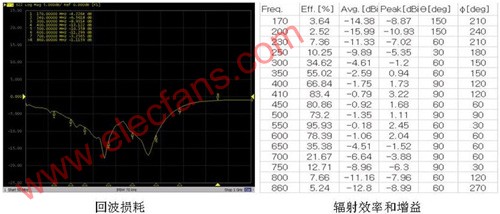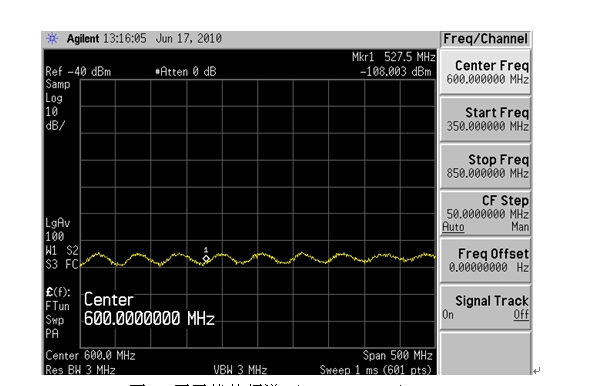The terminal products of CMMB mobile TV applications are mainly mobile phones, PMP, GPS, on-board TV and PCTV, etc. These systems have the characteristics of small size and strong internal interference. Strong interference is likely to have a serious impact on the performance of CMMB mobile reception. The stability of a system's performance is not only determined by chip performance, antenna performance and PCB layout, but also involves various interferences in the space and so on. If you do not pay attention to the suppression of interference in the design, there will often be a very large loss of performance.
Designing a CMMB mobile digital TV terminal with excellent performance requires comprehensive consideration of many factors, which will be discussed in detail in this article.
CMMB receiver chip
Zhuosheng Microelectronics' CMMB receiver chip MXD0251 integrates an independently developed silicon tuner and demodulator, contains 1.2V LDO, and only requires 3.3V power supply externally, reducing system cost and PCB area. MXD0251 has a noise factor of less than 3.5dB in the entire UHF band; the carrier-to-noise ratio of QPSK 0.5 mode reaches 1.4dB; the anti-digital analog adjacent-frequency interference performance is better than -50dB; the anti-analog co-frequency index reaches -14dB; Anti-co-channel interference adopts advanced algorithms, has very good laboratory indicators, and guarantees good reception sensitivity and anti-interference ability from the chip level. At present, there are many transmitted signal frequency points in various cities. In some places, the analog co-frequency and analog adjacent-frequency interference are very strong. Can achieve stable reception.

Figure 1: CMMB mobile digital TV terminal system architecture based on MXD0251.
antenna
The signal chain starts from the antenna. The CMMB receiving antenna of the current mainstream handheld mobile terminal is a whip antenna, other ceramic built-in antennas, and active built-in antennas also appear on the market. Taking a whip antenna as an example, first of all, it is necessary to ensure a suitable antenna length, usually the length is required to be greater than 120mm and less than 200mm, and the ideal length is 180mm.
After the antenna is determined on the structure, the matching and debugging of the antenna need to be done. The purpose of antenna matching is to reduce signal reflection and improve signal transmission efficiency. For the UHF receiving frequency band, it is recommended that the antenna matching circuit reserve a Î -type network. Good antenna matching should make the return loss less than -6dB in the operating frequency band, the overall average gain of the antenna is greater than -4dBi, and the average radiation efficiency is greater than 40. Then do data analysis based on the results of the active test to determine whether it is necessary to modify the antenna matching to truly achieve the matching conjugate, or purposely optimize the performance of a certain frequency band.
In short, antenna matching can achieve performance balance in the entire working frequency band, improve the overall reception performance of the antenna, or optimize the performance of a certain frequency band in a targeted manner. Figure 2 is a practical case. From the comparison between 500MHz and 700MHz, the matching of 500MHz is better, the resonance is stronger, and the gain is increased by 5dB compared with 700MHz.

Figure 2. Passive performance of the antenna.
After the antenna is selected and matched, the RF receiving front end needs to be considered. On the PCB, ensure that the RF traces are as short as possible, do not have extra fulcrums, there are no digital signals around the traces, no other non-ground vias, and sufficient RF grounding is the basic requirement. Even if this is done, there may still be various interference coupling into the RF part. Zhuosheng Microelectronics has in-depth cooperation with mainstream CMMB antenna manufacturers to help customers choose the most suitable antenna scheme, design a good matching circuit, and cooperate with antenna manufacturers for antenna matching and debugging.
Board level interference
The influence of power and ground is mainly manifested in the deterioration of the noise floor of the system, so it is necessary to ensure a small power supply ripple. CMMB belongs to a time slot system. In the time slot of the received signal, the current will be relatively large, and the current in the other time slots is very small. In this case, the voltage change also needs to be considered. If it is DC-DC power supply, the layout wiring should ensure that there is no interference in the power circuit. In addition, the ground loop should ensure that the loop in the RF section is shortest and clean. If there is a strong digital interference part, it can be divided on the ground loop to reduce the impact of the digital part loop on the RF part.

Figure 3 Single tone interference (Span: 20MHz)
The system clock, ADC, DAC, DDR clock, and the interference effects of some signal lines appear as strong spurs (measured at the RF input port by a spectrum analyzer) at certain frequency doubling points, as shown in Figure 3 As shown. The interference at 700MHz reaches -89dBm, which will reduce the receiving sensitivity at 698MHz. Sometimes, there are multiple spurs in the CMMB operating band, which means that multiple frequency points will be affected, as shown in Figure 4.

Figure 4 Multiple tone interference (Span: 500MHz)
The internal algorithm of MXD0251 has special treatment for the above situation, and it will automatically detect the location of spur and filter it out. Generally, these problems can also be avoided in Layout. The interference source is far away from the RF part. In terms of ground loop processing, try to make the interference source and RF part have no direct ground loop on the RF trace layer, and the trace of the interference part should be as short as possible. Of course, the phenomena encountered by each system may not be the same, and specific phenomena require specific analysis. Figure 5 is a system with excellent spur performance: there is no spur at each frequency point in the frequency band, thus making the sensitivity curve relatively flat.

Figure 5 interference-free spectrum (Span: 500MHz)
Coupling interference
Common coupling interference includes: LCD FPC radiation interference; keyboard backlight interference; DC-DC and so on. Among them, LCD is usually the main source of interference. Noise is coupled into the chip through the antenna, which deteriorates the reception performance, and screen interference often affects a relatively wide frequency band. It is usually required to add EMI devices on the signal line, and do shielding and grounding. Judging from many cases, below 600MHz, the FPC of the screen will have an impact of 3dB to 7dB. The lower the frequency, the greater the impact. In addition, it is necessary to pay attention to suppress the interference of other wireless communication signals in the space at the RF front end, and adding a SAW filter is an effective solution.
In terms of coupling and receiving sensitivity, good systems and poor systems sometimes differ by tens of dB. Such a gap will directly affect the success or failure of a mobile TV product design. Zhuosheng Microelectronics can provide closed-loop performance test and open-loop performance test for customers' prototypes, so that they can discover potential coupling interference in the whole machine. We can determine the source of interference for customers, analyze the interference factors, propose interference suppression solutions, and debug the complete machine with excellent performance.
Outdoor Speakers,Outdoor Speaker System,Outdoor Bluetooth Speakers,Outdoor Wall Mounted Bluetooth Speakers
The ASI Audio Technology Co., Ltd , https://www.asi-sound.com